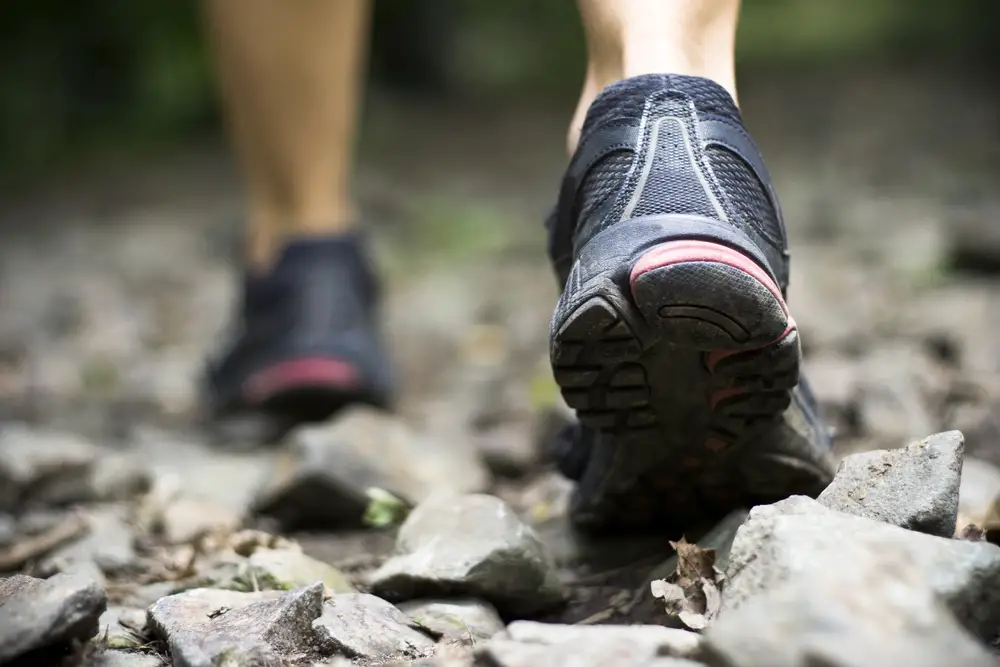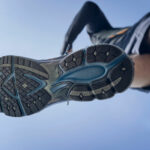There are many key differences between a pair of hiking boots (or newer hiking shoes with a low top) and a pair of trail running shoes. They both offer different things to hikers who need to protect their feet against the elements when out for a hike.

But choosing the right boots depends on what you need - do you like rough terrain or lightweight trail hikes? Do you need something for sprawling and potentially dangerous adventure or just something comfy for day hikes? Do you plan to travel great distances that could take all day or do you just want to climb a rough mountain and then go home?
Table of Contents
Hiking Shoes vs Running Shoes
The biggest differences between hiking shoes and a pair of trail runners are the size, weight, and durability. Think about where you want to go and how you want to travel - the shoe that you will need for a long excursion across mountainous terrain will be very different for gentle strolls which are miles long and need a lighter bit of footwear to support your soles.
Why use hiking boots?
Hiking boots offer excellent durability and can wick away all problems the elements will throw at you. They offer better ankle protection than trail running shoes and generally have a much longer lifespan. In addition, they will keep your feet warmer and offer greater water protection due to the materials that are used to make this type of shoe.
These qualities make these boots better for rough and ready trips and are the perfect hiking footwear for those that need protection from the trails they walk.
Why use trail runners?
On the other hand, a trail runner is perfect for shorter hikes and in warmer weather. They are breathable and lightweight, meaning that they are better for both hikes on gentle trails and also for very long-distance hiking. You'll be thankful for the weight savings at the end of a long trip! Trail runners also have a short break-in period vs hiking boots and will keep your feet cooler in the summer months.
These are the perfect shoes for people that need a lightweight option - if you don't plan to scale the side of perilous mountains but instead want to stroll through forests, these will be the best option for you.
Features of Hiking Shoes
Durable boots that only need replacing every 1,000 miles, saving you money in the long term
They offer excellent protection against the elements
There is added stability and ankle support from a high top, but the low top variants also help when managing hazardous terrain better than a runner would
Offer a better defense against injury to ankles with support to the ankle, even with a low top
The shoes are designed for rough hikes as the harder materials can stand up to the punishment
The materials used to make hiking boots are warmer, making them perfect for trips during fall and winter
All good boots are waterproof and offer excellent protection against damp or sodden ground
Heavy lugs offer an excellent grip that will support the hiker on uneven ground and over difficult obstacles
Perfect for hikers who need to protect their ankles over a distance as they are comfy on the inside and rigid on the outside
Do Hiking Boots have any Weaknesses?
Although hiking shoes offer great support and better warmth, they do have drawbacks.
Key weaknesses of hiking boots
They are heavier than trail runners and the weight can be difficult to use over a long hike
They are generally less breathable than running shoes
The break in period can be long and painful if not done properly
Hiking shoes can be more expensive than trail running shoes
Features of Trail Running Shoes
Lightweight design makes them before for shorter trails as they aren't as heavy to keep lifting
Breathable materials make runners cooler and better for spring and summer hikes
The softer design allows for a short break-in period (or none at all!) meaning that you can start your journeys as soon as you have your new shoes
A pair of trail runners are better for a lighter, shorter hike due to the lightweight design and breathable material
Many different traction options are available depending on your need, allowing for greater specialization and even different shoes for different treks
The grip comes from pressure applied by the wearer, so they are versatile in giving you the grip you need when you need it
Can easily last for up to 500 miles of hiking meaning that you can stroll easily knowing that your runners will support you in the long run
These shoes are designed for a trail runner who needs light shoes for a gentle hike, so expect all the features that you would need to be reliably built into these lightweight options
Do Trail Runners have any weaknesses?
Although they might sound perfect for short hikes and gentle walking, trail runners do have some weaknesses that buyers should keep in mind.
Key weaknesses of trail running shoes
They offer less protection against the elements than hiking shoes
They offer less ankle protection, even compared to short low top hiking boots
Runners can be worn out and need to be replaced more often
Although they have a versatile grip, they will never be as strong as the lugs on a good pair of boots
The materials do not offer protection against the elements and shouldn't be used for winter excursions
Conclusion
Answering the question of hiking boots vs trail running shoes isn't easy as they both have so many strengths depending on your needs. A hiking boot will always be stronger and a runner will always be lighter on your feet, however.
If you need ankle support and heavy-duty protection, take a look at a hiking boot that can offer it. You don't need to buy leather boots either - a wide range of synthetic and vegan boots are available at affordable prices now.
If there are runners who are thinking about the needs of trail running and making sure they are cool, versatile, and excellent for a long hike, keep in mind that trail runners offer a lesser weight and will still protect your feet.
- Are Merrell Shoes Good? – An Unbiased Review of Merrell Footwear - December 9, 2023
- Where Are Merrell Shoes Made? - December 9, 2023
- Camping in 40-degree Weather: Tips and Tricks - September 25, 2023

![Difference between Hiking and Trekking [What’s The Difference?] Difference between Hiking and Trekking [What’s The Difference?]](https://grandcircletrails.com/wp-content/uploads/2022/06/Difference-between-Hiking-and-Trekking-150x150.jpg)
![What is the Difference Between a Parka and a Jacket? [3 Differences Explained] What is the Difference Between a Parka and a Jacket? [3 Differences Explained]](https://grandcircletrails.com/wp-content/uploads/2021/11/Clothing-for-the-camping-trip-1-150x150.jpg)



![Difference Between Merino Wool and Regular Wool [+Similarities] Difference Between Merino Wool and Regular Wool [+Similarities]](https://grandcircletrails.com/wp-content/uploads/2022/08/Difference-Between-Merino-Wool-and-Regular-Wool-150x150.jpg)